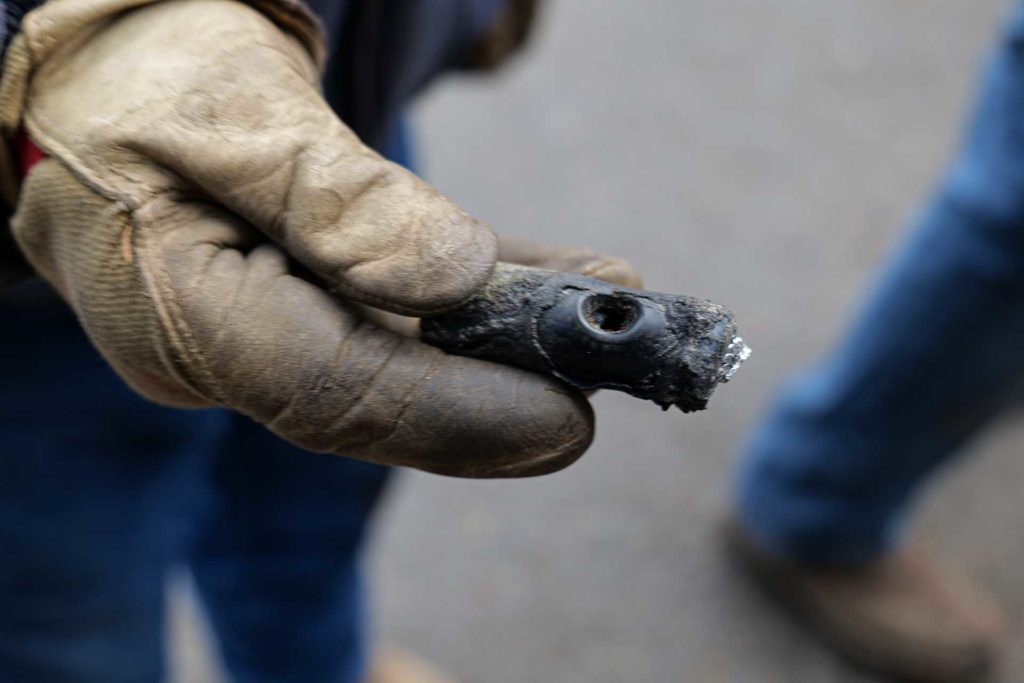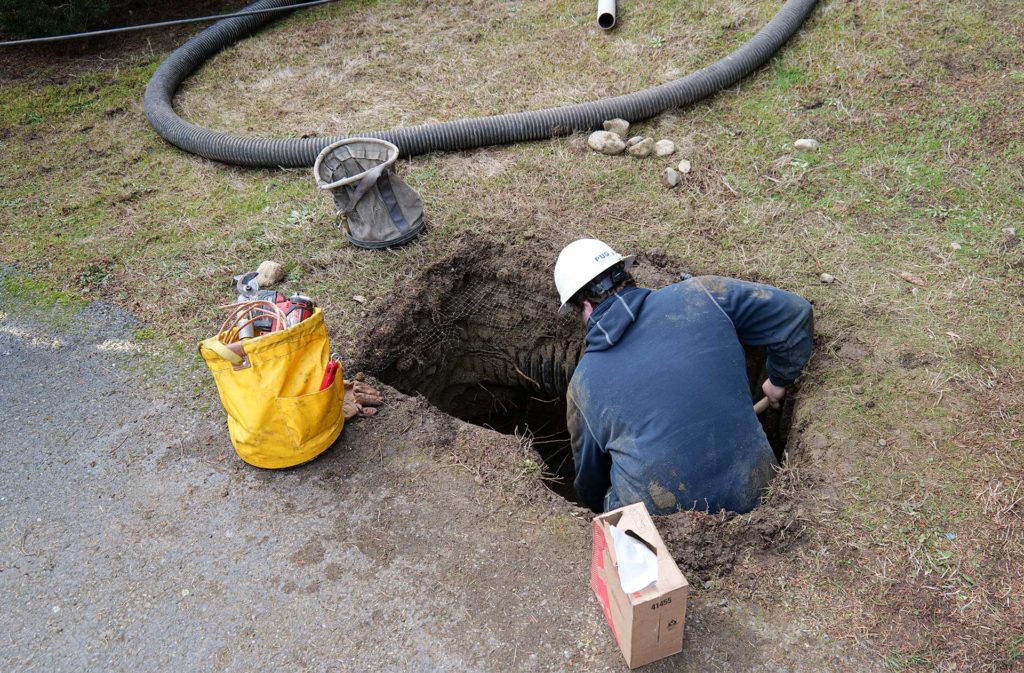The Other Outage Season

Unlike in winter, spring outages can occur when skies are clear and hardly a breeze is blowing. In fact, that’s usually when they occur, because they’re caused by moisture rising out of warming soil and moving past 30-year-old electric lines buried directly in the ground. A pinhole-sized nick is all it takes to lose power to a neighborhood.
Today most of the PUD’s underground wire is placed in conduit. Not so in many neighborhoods built in th80s or before, like Kala Point or Port Ludlow where trenches were dug, and lines were placed.
An underground fault occurs when the outer sheath of a line wears through to the copper within that act as the ground. This is known as a “phase-to-ground”, causing the outage which is detected by the PUD’s outage management system.
Line crews can quickly identify the region via mapping, but defining an exact location requires a mix of experience and a specialized device called a “thumper”. A thumper connects to the isolated line section, sending a high voltage pulse that, above ground, can be heard by the line crew. The line crew must walk the length of the isolated line to locate the sound immitted when the voltage exits the fault. The thumper allows crews to step-up voltage until the fault is found. Dirt work contractors then begin to dig. Crews carefully navigate underground faults to avoid other utilities in the area by using specialized vacuum digging devices and digging by-hand.

Once the fault is located, line crew replace the segment and carefully backfill around the line. Further work compacting the soil or applying asphalt may be required as well.
Underground lines require significantly more time to repair compared to overhead lines. Construction of a new underground line is typically 3-5x the cost of overhead. Overhead line sections prone to repeat outages are considered for undergrounding to save on outage response long-term.